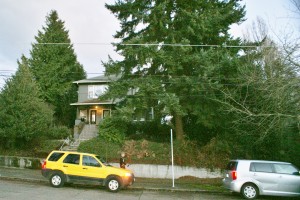Press Release: from Seattle Urban Forestry Commission
SUBJECT – Hydrologist or similar professional sought for Seattle Urban Forestry Commission
FOR IMMEDIATE RELEASE: FOR MORE INFORMATION CONTACT:
10/8/2014 4:00:00 PM Sandra Pinto de Bader (206) 684-3194
Hydrologist or similar professional sought for Seattle Urban Forestry Commission
SEATTLE – City Council is looking for a new Urban Forestry Commission (UFC) member to fill Position # 4 (hydrologist or similar professional). A hydrologist or similar professional, preferably with expertise in the study of natural drainage, climate or air quality, or a combination thereof is preferred. The term would start December 1, 2014 and would extend through December 1, 2017. This position is appointed by the Mayor, and confirmed by City Council, for a renewable, three-year term.
The nine-member UFC consists of a wildlife biologist; an urban ecologist; a representative of a local, state, or federal natural resource agency or an accredited university; a hydrologist; a certified arborist; a representative of a non-profit or non-governmental organization; a representative of the development community or a representative from a non-city utility; and an economist, financial analyst, or Washington State license real estate broker.
The City of Seattle set the bold goal of achieving 30 percent tree canopy cover by 2037 to increase the environmental, social, and economic benefits trees bring to Seattle residents. The Seattle Urban Forest Stewardship Plan (UFSP) is a comprehensive strategy for increasing Seattle’s tree canopy cover to meet the 30 percent target. The UFSP lays out goals and a broad range of actions to be implemented over time to preserve, maintain, and plant trees as well as restore the public forested areas remaining in the city. More information about Seattle’s urban forest program can be found at http://www.seattle.gov/trees/management.htm
The Urban Forestry Commission was established in 2009 by Ordinance 123052 to advise the Mayor and City Council concerning the establishment of policy and regulations governing the protection, management, and conservation of trees and vegetation in the City of Seattle. Commission meetings are held twice a month on the first and second Wednesday from 3:00 p.m. to 5:00 p.m. Commission members generally must commit approximately 10 hours per month to Commission business and serve without compensation. Additional information about the Urban Forestry Commission can be found at http://www.seattle.gov/trees/UFcommission.htm
Applications are due November 10, 2014.
To be considered, please send a letter of interest and resume to Sandra Pinto de Bader (Sandra.Pinto_de_Bader@seattle.gov). To send a paper submittal, address it to: Sandra Pinto de Bader, Urban Forestry Commission Liaison, Urban Forestry Commission, Office of Sustainability and Environment, City of Seattle, 700 Fifth Avenue, Suite 1868. PO Box 94729, Seattle, WA 98124-4729.
For more information, please contact Sandra Pinto de Bader, Urban Forestry Commission Liaison, at (206) 684-3194 or via email at Sandra.Pinto_de_Bader@seattle.gov

